
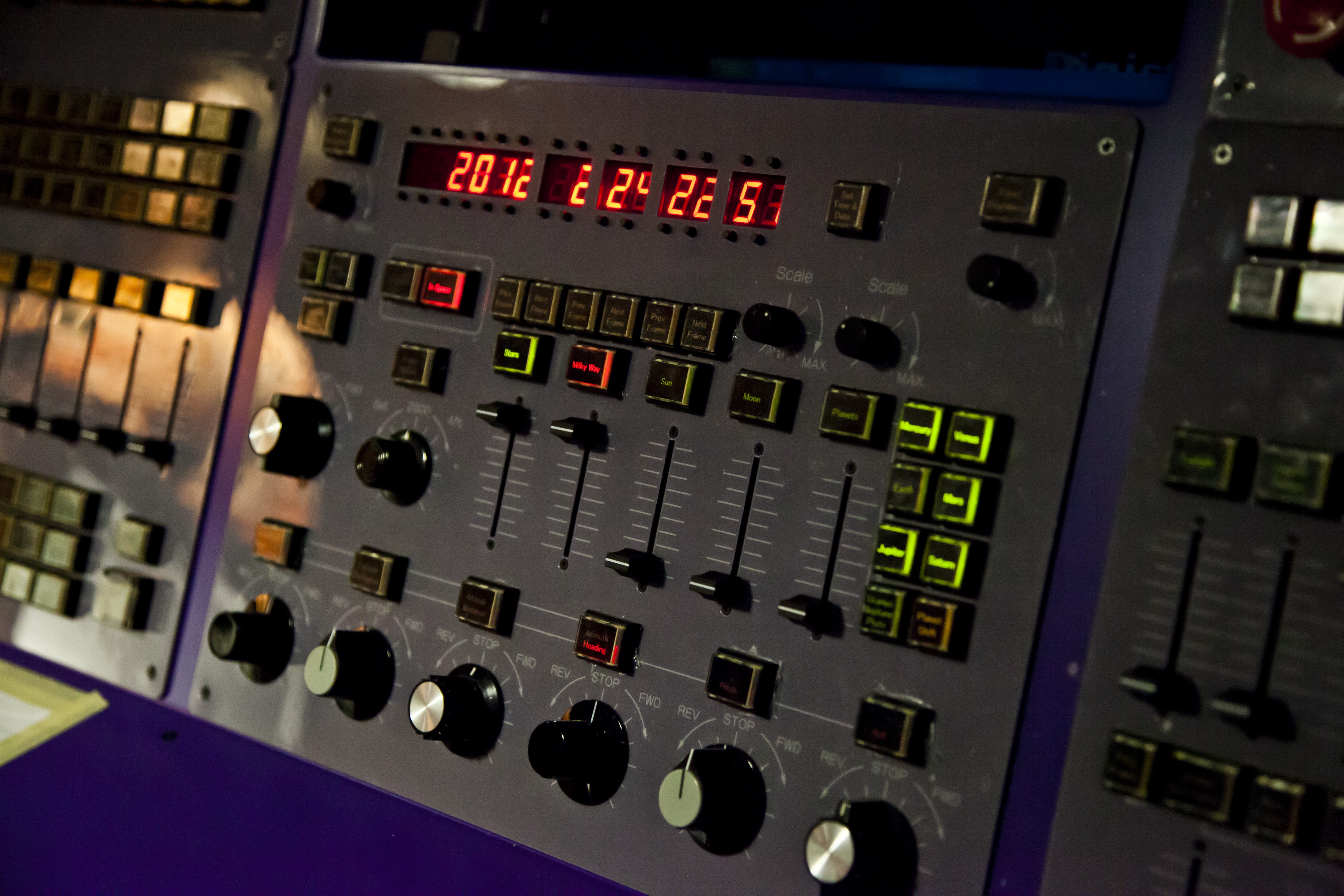

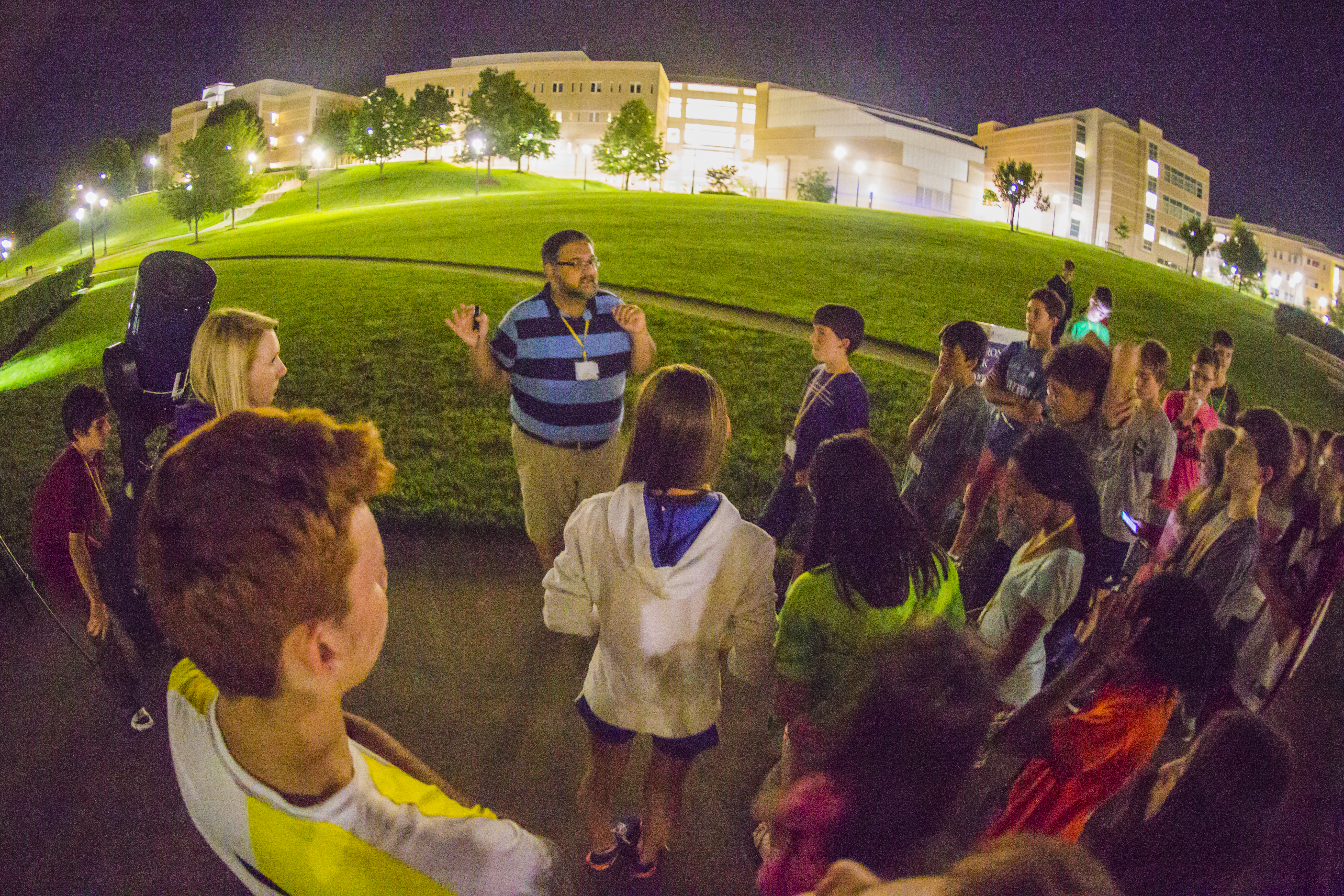



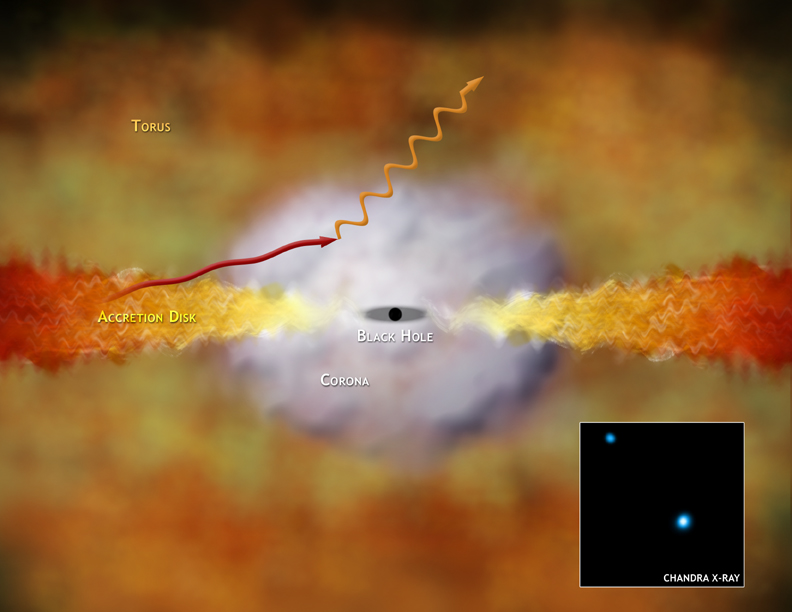

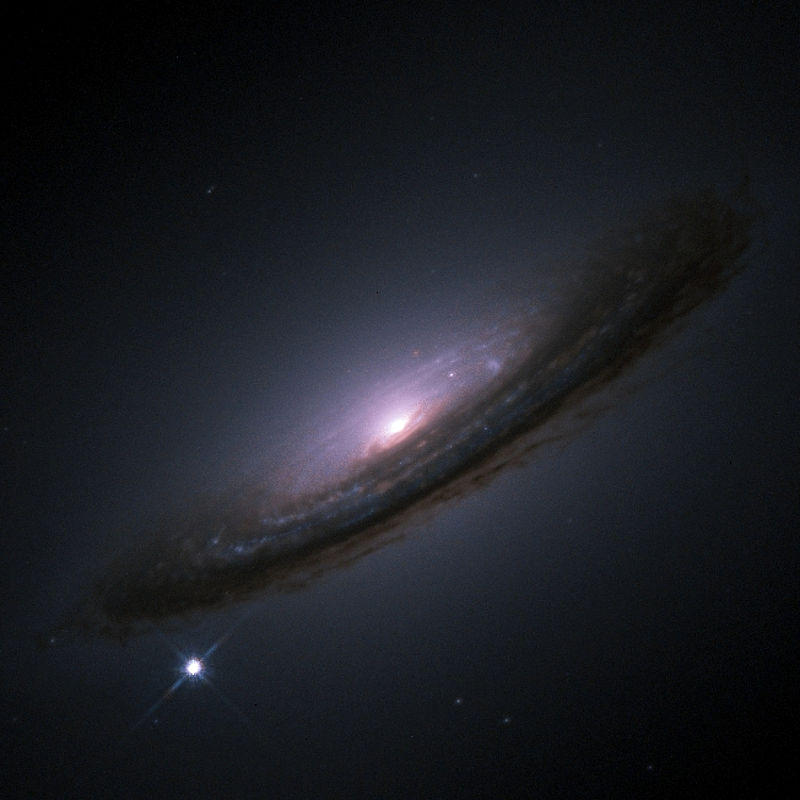

Science Has An Incredible Story To Tell
How do you become something you don't see? We say science is for everyone but sometimes our words, our caricatures, and our actions suggest something else. The only prerequisite to thinking like a scientist is remaining curious about the natural world and continuing to ask the question WHY!
Hello! My name is Shanil Virani. I am an award-winning scientist, passionate educator, a vocal science advocate, & co-author of Daughter of the Stars, a photo-book about light pollution and the loss of night. One of my passions is to affect real change in attitudes towards science in my community. To do so, I created and host Our Island Universe, a weekly podcast that looks at all things space and how what goes on "up there" affects us "down here". I also created summer Space Explorers camps (named intentionally and designed for rising 2nd to 10th graders), as well as a monthly Science Sunday for Girls series (K to 6th grade) at James Madison University where I was the Director of the John C. Wells Planetarium. All of these initiatives continue to thrive, grow, and allow young people to think like a scientist and know that they can become one too if they remain curious!
Astronomy is a shared cultural connection and by telling stories of our past and present, I hope to inspire the future.
Tweets by @shanilv
About Shanil
Shanil is an award-winning astronomer, a passionate science educator, creator/host of Our Island Universe, & co-author of Daughter of the Stars, a photo-book about light pollution and the loss of night.
Shanil earned his Bachelor of Science degree in Honours Physics and a Bachelor of Arts degree in Philosophy at the University of Waterloo. He did his graduate work at Yale University where he studied supermassive black holes lurking at the centers of galaxies in the nearby and distant Universe. As a graduate student, he was awarded a prestigious 3-year external fellowship from the Natural Sciences and Engineering Research Council of Canada (NSERC) to support his doctoral research at Yale. For his graduate research, he led an international team to write proposals to collect, analyze, and publish data obtained from both space-based and ground-based facilities that investigated the role of supermassive black holes in galaxy evolution as well as understanding their contribution to the cosmic X-ray background. He was awarded the 2009 Chambliss Astronomy Achievement Award medal by the American Astronomical Society for exemplary research as a graduate student. Prior to Yale, Shanil spent 5+ years at the Harvard-Smithsonian Center for Astrophysics as part of the Science Team of the Chandra X-ray Observatory, NASA's flagship, space-based, X-ray mission. While at the Smithsonian Astrophysical Observatory, he received 10 NASA Achievement Awards or awards of distinction from The Smithsonian Institution for his contributions to the operations of the Chandra X-ray Observatory. In 2013, he was appointed a Solar System Ambassador by NASA's Jet Propulsion Laboratory. Solar System Ambassadors communicate the excitement of JPL's space exploration missions and information about recent discoveries to people in their local communities. In Fall of 2017, Shanil was nominated for James Madison University's Distinguished Teacher Award. He has authored or co-authored over 100 publications in scientific journals that have been cited more than 3,000 times.
Shanil created and hosts #OurIslandUniverse, a look at all things space and how what goes on ``up there'' affects our life ``down here''. The central themes are to promote the public understanding of science, our exploration of the natural world, and how modern science is really a continuation of our species natural desire to understand the cosmos and our perspective within it. Astronomy is a shared cultural connection and by telling stories of our past and present, he hopes to inspire the future. You can find episodes of the show and subscribe to the series via Spotify and SoundCloud.
You can find him on Twitter as @shanilv where he invites you to continue the conversation with him. To invite him to come speak to your community group or organization, please use the "Contact" form to reach him.
The John C. Wells Planetarium at James Madison University is a $2 million, state-of-the-art hybrid facility, one of only a few of its kind in the world. It boasts both an Evans & Sutherland Digistar 5, a ultra-high resolution digital projection system, and a Goto Chronos opto-mechanical star projector that provides visitors with a superior and realistic night sky.
Please visit the John C. Wells Planetarium website to learn more about its free public shows every Saturday, our summer Space Explorer camps for rising 2nd to 10th grade students, and our public science talks. To encourage young American girls to consider careers in science & engineering, make sure to check out our free, monthly Science Sunday for Girls events!
After visiting the planetarium, continue the conversation with us via Facebook, Twitter, Instagram, and YouTube.
Honors & Awards
Public Appearances and Online Courses
Shanil is a confident public speaker who has given engaging science presentations to diverse community groups (public schools, church groups, astronomy organizations etc.), large and small. As a NASA Solar System Ambassador, he frequently visits schools in the Shenandoah Valley to share and communicate the excitement of space exploration and why it matters.
If you would like to request Shanil for a talk please use the "Contact" page.
Teaching
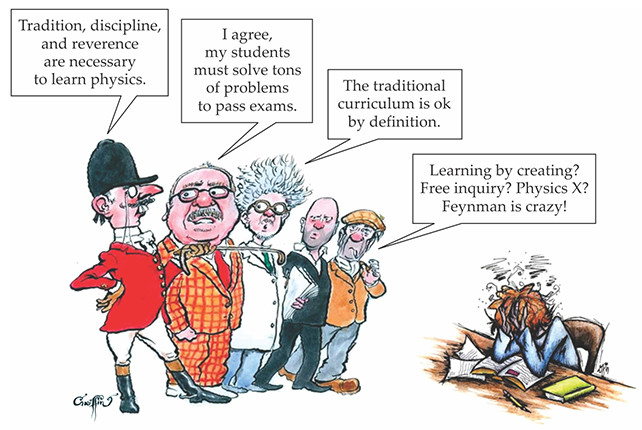
As a successful astronomer, I have had the good fortune to observe at some of the world’s largest telescopes -- the Magellan Telescopes in Chile, the Canada-France-Hawaii Telescope and the Keck Observatory atop Mauna Kea, Hawaii. I have also travelled around the world to present my research at conferences. Inevitably, on every plane trip, the person sitting next to me would ask where I am going and what I do. I have noticed that if I say I am an “astronomer”, their eyes get wide and I am peppered with question after question regarding science discoveries that they have read about, heard about, or seen on TV. I have always found these conversations heartening because it demonstrates that the public at-large is really interested in science, our perspective of the Universe, and wants to learn more about it. However, if I mention to my neighbor that I am an “astro-physicist”, I get “Physics? You must be so smart to spend your life studying that subject. I hated that subject in school.” While this may be a momentary ego boost, I have come to realize that what these intelligent, educated, articulate people are really telling me is that they all have had a frustrating, intimidating experience with a subject that I love. Must physics teaching be like this? My goal as a science educator is to not only share my knowledge and passion for science, but to also convey to my students the dynamic nature and excitement of science and why it should also matter to them.
Physics is not simply a collection of facts and formulas although our students want to see it that way. Science is a mode of thought that allows us to critically engage our world and attempt to understand why things work the way they do. I want my students, motivated by curiosity and creativity, to see science at work in their everyday lives, to have the ability and confidence to know that they, too, can understand how the Universe works.
So how do we engage with our students to get them to learn science? To stoke their innate curiosity about the natural world? What we've been doing clearly isn't working as study after study shows our students aren't learning science, we don't teach it well, and that our students graduate high school and even college holding fundamental science misconceptions about the natural world after years of education. Some of this content -- cause of the seasons, phases of the moon, Earth's path around the Sun, etc -- is taught in elementary/middle school. Students learn science by doing science. They need to be the scientist. Sitting at a desk doing worksheets, or memorizing facts and formulas, doesn't work.
Play is the sandbox of science. One way I've had my students play and become the scientist in my classroom is to have them investigate how widespread various common scientific misconceptions are and to learn first-hand how pervasive it is amongst their peers. Students pick a basic of question of science at the beginning of the semester (something they should know before starting high school typically), they dig into their misconception by first understanding it themselves but then also asking random students outside of the classroom their question. Their investigation must explore reasons why their peers may hold an incorrect misconception about our Natural World. The final product isn't an essay or group presentation. It is a short, edited, YouTube video that introduces the basic scientific question they are exploring, pursue why our society may hold these basic misconceptions, but also present the correct model that explains the phenomenon they are investigating. You can find their stories in the "Common Science Misconceptions Explained?" tab.
To summarize, I am an experienced instructor who has taught a wide diversity of classes; from Astronomy and Physics, to Mathematics and Science Education. I have created, organized, prepared, and led courses with 10 students to more than 100 participants. I have taught students, from pre-K to college seniors, with a broad range of backgrounds, preparation, and learning abilities. I take considerable pride in that I have consistently earned excellent teaching evaluations from my students. In Fall of 2017, I was nominated for James Madison University's Distinguished Teacher Award.
Common Scientific Misconceptions Explained?
Study after study shows our students aren't learning science, we don't teach it well, and that our students graduate high school, and even college, holding fundamental science misconceptions about the natural world. Some of this content -- cause of the seasons, phases of the moon, Earth's path around the Sun, etc -- is taught in elementary/middle school. To see how widespread various scientific misconceptions are, to learn how pervasive it is amongst even college students, I have my students pick a basic of question of science (something should know before leaving high school) and explore reasons why their peers may hold incorrect misconceptions about our Natural World. The final product isn't an essay or group presentation. It is a short, edited, YouTube video that introduces the basic scientific question they are exploring, pursue why our society may hold these basic misconceptions, but also present the correct model that explains the phenomenon they are investigating. These are their stories (sorted by semester).
SPRING 2019
FALL 2017
FALL 2016
FALL 2015
FALL 2014
FALL 2013
FALL 2012
Starry Nights
Starry Nights is a week-long series of events designed to raise awareness about light pollution and the steps we can take to end it in our community. Light pollution — the overuse and misuse of artificial light at night — wastes money, wastes energy, endangers our physical, mental, and spiritual health, takes a tremendous environmental toll, and erases the stars from our skies. Worst of all, we have bought into the idea that more light makes us safe. Smarter use of light makes us safe, saves cities/universities/homeowners money, is better for our health and our environment. We can have responsible lighting that ensures our safety and security without polluting our nights. Please join us in celebrating the night and learning how we can implement solutions right here, right now!
Starry Nights, launched in 2014, was created by Dr. Paul Bogard, acclaimed author of The End of Night: Searching for Natural Darkness in an Age of Artificial Light, and Shanil Virani, co-author of Daughter of the Stars, a photo-book about light pollution and the loss of night.
Research
Shanil Virani's research has primarily focussed on three distinct areas: science education & communication, fundamental research related to astrophysical phenomena, and spacecraft science operations. An extensive and detailed bibliography can be found by clicking on the Publications tab.
Science Education & Communication
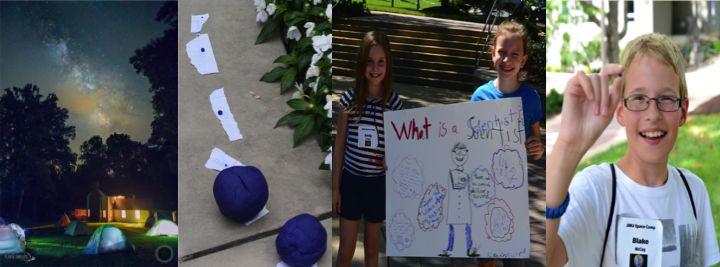
Science may be "under attack" by some politicians in the United States but the problem is really much deeper. Nearly 1 in 2 Americans think there is no evidence for climate change or think it is due to natural causes. Approximately 1 in 4 Americans (and 1 out of 3 Europeans) think the Sun revolves around the Earth. Nine out of 10 Americans can't explain basic phenomena like the cause of the seasons nor the phases of the Moon (yes, even at Harvard). ~5 decades ago we sent 12 men to the Moon. Then we stopped going. Many Americans now think that the Moon landings are a Hollywood hoax. July 20, 2019 will be the 50th Anniversary of Neil Armstrong and Buzz Aldrin walking on the Moon. There is more technology and computational power in our smartphones than was in the computers used to put those 2 men on the Moon. It is a terrible irony that at a time of great scientific and technological advancements, that scientific illiteracy is at an all time high.
We teach science poorly, our kids are not learning science, and therefore, we produce fewer and fewer scientists and engineers. At 5 years of age, every kid is a scientist! They are asking questions about the world around them and why things work the way they do. Then something happens. We spend the next ~20 years beating their innate curiosity and inquisitiveness about their world out of them. In fact, almost twice as many bachelor’s degrees were awarded in physics the year before Sputnik, deemed a time of dangerous educational neglect, than in 2007! The launch of Sputnik was a galvanizing moment in the history of our country and you can trace the start of the “Space Race” to that singular event. It started an enormous investment in science, in engineering, and in education by our government. Yet today we are doing worse than the year before Sputnik was launched.
What does it mean to our country if our society is scientifically illiterate? Does it matter? What does it mean for our country's future prosperity and economic growth? Will American leadership in science and engineering be maintained in the coming years? What about our future capacity for innovation and entrepreneurship? And what does attacks on science mean for the future of our planet? Americans two generations ago walked on the Moon. What is our legacy? These are some the questions I’ve thought about and spoken about within my community. I think we are at an important crossroads in the United States. We need to engage and have deep, meaningful conversations with the American public about the nature and role of science in our country, how we teach it, and why it is critically important that we encourage many more young Americans to consider careers in science and engineering.
While these are large, national problems, the solutions are local and begin in our communities.
Our Island Universe
I created and host a science podcast entitled Our Island Universe. This weekly series is a look at all things space — how what goes on “up there” affects us “down here”. While topics generally cover how our ancestors viewed the night sky, to new discoveries in astrophysics, it really is an opportunity for me to share my passion for science and why science matters. It is also an opportunity to talk about how science is done and how we know what we know. Our Island Universe is designed to improve science literacy and raise awareness about science. Astronomy is a shared cultural connection and by telling stories of our past and present, I hope to inspire the future.
Planetarium Public Science Talk Series
Science is constantly changing, constantly uncovering new clues about our place within the Cosmos. Even more incredible, there are actually people who get paid to figure out why the Universe is the way it is and not some other way! I think it is important for the public to see science "in action", to see people engaged in the discipline, advancing our understanding of our address in the cosmos, and just as importantly, sharing their passion and their enthusiasm for their research. Beginning in Fall 2012, I created and curated a series of special Planetarium Public Science Talks that was intended for a general audience to see the scientist at play in their sandbox -- the Universe. These were speakers I intentionally sought out and invited because I thought the science they are doing is really cool AND also because I thought they would give a dynamic public presentation. Billed as "intellectual nourishment" for the mind, these presentations routinely drew upwards of 300 people to a large auditorium to hear "cutting edge" science. Every presentation was presented via Facebook live but was also recorded and made available via the Planetarium's YouTube channel. Past speakers included Dr. Scott Ransom (Pulsars, Magnetars, Black Holes, Oh My! The Wickedly Cool Stellar Undead), Dr. Heidi Hammel (Pluto: Planet or Pretender?), Dr. Jason Kalirai (Telescopes as Time Machines: The Hubble Space Telescope's Outrageous Legacy & the Future to Come with the James Webb Space Telescope), and former Chief Engineer and now Manager of the NESC Integration Office at NASA/Langley, Ms. Jill Prince (Journey to Mars: NASA's Path to the Red Planet)! My personal highlight was hearing former JMU colleague and Professor of Mathematics & Statistics, Dr. Caroline Lubert, discuss her acoustic research at NASA's Wallops Island Flight Facility (When I Grow Up, I Want to be a Rocket Scientist)!
Space Explorers Summer Camps
In order to reach impressionable young Americans at a time when they are thinking of what they want to pursue when they grow up, I created three, week-long Space Explorers summer camps that took place at the John C. Wells Planetarium. Each camp was broken by grade level. I created and led a half-day camp for rising 2nd to 4th grade students, a full-day camp for rising 5th to 8th grade students, and a residential camp at JMU for rising 8th to 10th graders! Via these camps housed at a state-of-the-art planetarium, I sought to inspire and excite the next generation of scientists and engineers. These engaging, hands-on, inquiry-based camps demonstrated to students that science is constantly changing, constantly uncovering new clues about why our universe is the way it is and not some other way. We asked basic questions about the natural world and then use the scientific method to try to answer them. For example, we investigated the size and scale of our solar system, learned about the robotic exploration of it, and learned about our own planet Earth and our fragile environment. Each summer I arranged special Space Explorers camp visitors that included JMU science professors, engineers working at NASA on new missions, and even a NASA astronaut!
Science Sunday for Girls
How do you become something you don't see? We've long known that the lack of diversity in STEM (science, technology, engineering, and mathematics) fields has been a persistent problem for decades. When we asked our Space Explorers to describe what they think a scientist looks like, we saw traditional stereotypes of "white", "male", and "old" year after year in their illustrations. Are scientists really different from everyone else? Are they "six sigma deviants" on some Bell curve?! We say science is for everyone but our caricatures of scientists, our words, and our actions say something else. We cannot continue to exclude from our classrooms and labs roughly half of our population. By doing so, we are not only limiting the conversation but we are also excluding bright minds that can bring their talent to bear on some really tough problems.
A recent NSF study shows that white men currently make up 51 percent of all STEM jobs despite making up only 31 percent of the population — which means women and most minority groups are underrepresented and underserved. Not only does this contribute to race and gender wage gaps — STEM workers typically have higher salaries and currently enjoy a lower rate of unemployment than the general working population — but it also critically shortchanges the STEM community, since it means there are talented minds that haven’t been reached and important perspectives that are missing. Science Sunday for Girls was my small contribution in encouraging young American girls in the Valley to consider careers in science & engineering. Science is for everyone and its important that young girls know that and see that in action!
We have submitted several papers now on what we have learned first-hand about the kinds of hands-on, engaging, inquiry-based activities that lead to the largest gains in deep student learning. In addition to reaching young Americans, our summer Space Explorers camps and Science Sunday for Girls events provided JMU pre-service students and physics majors interested in teaching with real, hands-on teaching experience, learning how to differentiate their instruction for the various students that attend our camps and events, as well as how to teach science that naturally stokes a student's own curiosity about the natural world.
Astrophysical Research
It is now recognized that every galaxy likely hosts a supermassive black hole that lurks at its center. Supermassive black holes that show signs of devouring material in its immediate vicinity are called "Active Galactic Nuclei" (AGN). Much of my astrophysical research has involved carrying out surveys and studies to better understand the AGN phenomenon and to understand the relationship between the supermassive black hole at the center and its host galaxy. In order to understand the nature of activity in galactic nuclei, in particular how it is initiated and maintained, it is reasonable to begin with the question, how do active galaxies compare with non-active galaxies? But any such statistical comparison is fraught with difficulty since this, at least ideally, requires an understanding of the biases in the samples selected. Moreover, it is not clear just which parameter(s) should be compared. Could an active nucleus, especially in the more luminous members of the active galactic nuclei (AGN) family, have a significant effect on "macroscopic" scales; that is, not only on the immediate circum-nuclear environment, but even on the structural parameters of the host galaxy? For these reasons, a comparison of the environments of AGN has been of particular interest in the past three decades, motivated largely by the widely held hypothesis that interactions and mergers play a significant role in initiating activity of the supermassive black hole.
My specific research goals have been to probe hidden populations of supermassive black holes heretofore missed in previous surveys of active galactic nuclei in both the nearby and distance Universe. Using the Chandra X-ray Observatory, a space-based, NASA "Great Observatory", we stared at what we thought was a blank region of the sky at least as it appears to be as seen by the eye. This "blank" area on the sky has now been imaged by the Hubble Space Telescope, the Spitzer Space Telescope, the Chandra X-ray Observatory, and virtually every major telescope on the ground. Using 250,000 second exposures of 4 flanking fields -- called the Extended Chandra Deep Field-South -- this is one of the largest and deepest surveys ever performed with this Observatory. As the Chandra X-ray image embedded in the text shows, this area is anything but blank! In fact, MOST of the sources you see in this image are active supermassive black holes in the centers of galaxies betrayed by the gas swirling around it! These sources have been extensively followed up from the ground using some of the largest ground-based telescopes located in Hawaii and Chile.
In addition to my research related to the Extended Chandra Deep Field-South, I was also responsible for carrying out one of the deepest surveys of the hard X-ray sky ever done. 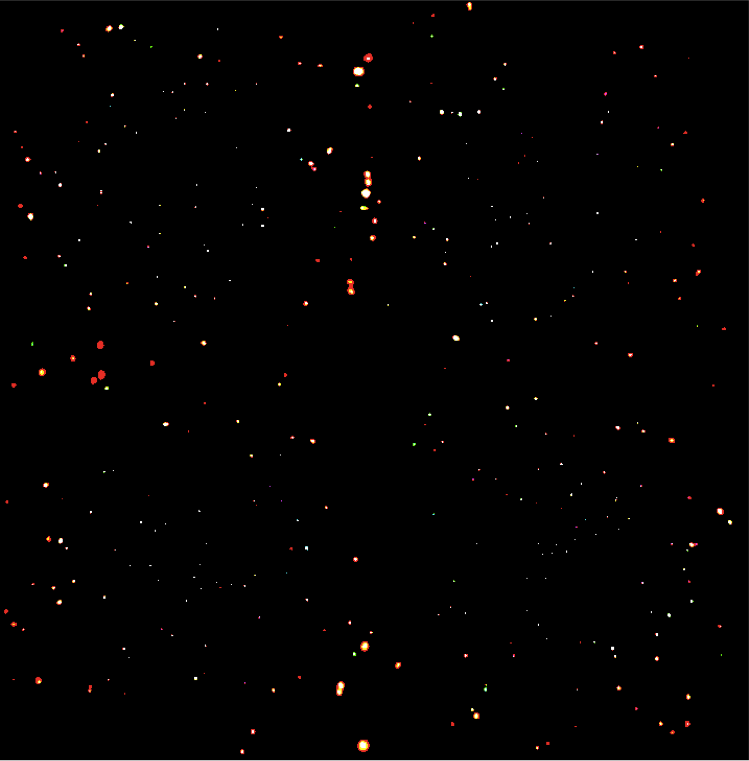 We obtained 3 million seconds of time with the space-based International Gamma-Ray Astrophysical Laboratory (INTEGRAL) to find so heavily obscured AGNs in the nearby universe that they don't appear in traditional AGN surveys. I was also awarded time for follow-up observations with the Chandra X-ray Observatory and with Japan's Suzaku space observatory. One of my more exciting results was finding a "precocious" supermassive black hole in the early Universe. Using the Chandra X-ray Observatory, we imaged and characterized the X-ray spectrum of an AGN found at a redshift of 6, i.e., at a time when the Universe was only ~800 million years old. Our results for the energy index and α_ox are consistent with no strong evolution in the active galactic nucleus emission mechanism with redshift out to z~6 and therefore with the picture that massive black holes have already formed less than 1 Gyr after the Big Bang. The background image to this page shows an artistic creation of what the central engine of an AGN may look like. This research result was the subject of a NASA/Chandra press release and was also highlighted as a "High Energy Astrophysics Picture of the Week" entitled "Black Hole Too Young?". To understand how AGN activity may have impact on their host galaxies on "macroscopic" scales, I developed a technique that permitted the robust decomposition of the bulge and disk components of a local sample of Seyfert galaxies (i.e., in the nearby Universe), as well as a (control) sample of nonactive galaxies matched to the Seyferts in the distributions of redshift, luminosity, and morphological classification. The structural parameters of the host galaxies in both samples were measured. No statistically significant differences at greater than the 95% level are found in these parameters according to a Kolmogorov-Smirnov test. Similarly, I found no statistically significant differences between the control and active sample host galaxies in terms of light asymmetries-bars, rings, isophotal twisting, etc. Since AGN were first discovered some 50 years ago, much work still remains in attempting to resolve these enigmatic objects and the role they play in the formation and evolution of galaxies.
We obtained 3 million seconds of time with the space-based International Gamma-Ray Astrophysical Laboratory (INTEGRAL) to find so heavily obscured AGNs in the nearby universe that they don't appear in traditional AGN surveys. I was also awarded time for follow-up observations with the Chandra X-ray Observatory and with Japan's Suzaku space observatory. One of my more exciting results was finding a "precocious" supermassive black hole in the early Universe. Using the Chandra X-ray Observatory, we imaged and characterized the X-ray spectrum of an AGN found at a redshift of 6, i.e., at a time when the Universe was only ~800 million years old. Our results for the energy index and α_ox are consistent with no strong evolution in the active galactic nucleus emission mechanism with redshift out to z~6 and therefore with the picture that massive black holes have already formed less than 1 Gyr after the Big Bang. The background image to this page shows an artistic creation of what the central engine of an AGN may look like. This research result was the subject of a NASA/Chandra press release and was also highlighted as a "High Energy Astrophysics Picture of the Week" entitled "Black Hole Too Young?". To understand how AGN activity may have impact on their host galaxies on "macroscopic" scales, I developed a technique that permitted the robust decomposition of the bulge and disk components of a local sample of Seyfert galaxies (i.e., in the nearby Universe), as well as a (control) sample of nonactive galaxies matched to the Seyferts in the distributions of redshift, luminosity, and morphological classification. The structural parameters of the host galaxies in both samples were measured. No statistically significant differences at greater than the 95% level are found in these parameters according to a Kolmogorov-Smirnov test. Similarly, I found no statistically significant differences between the control and active sample host galaxies in terms of light asymmetries-bars, rings, isophotal twisting, etc. Since AGN were first discovered some 50 years ago, much work still remains in attempting to resolve these enigmatic objects and the role they play in the formation and evolution of galaxies.
Spacecraft Science Operations
The Chandra X-ray Observatory is a space-based, "Great Observatory" that has revolutionized our view of the X-ray universe. It is NASA's flagship X-ray observatory, just like the Hubble Space Telescope is NASA's flagship optical observatory. Launched in 1999 onboard the space shuttle Columbia, the Chandra X-ray Observatory's unprecedented resolution allows high energy astrophysicists like me to find extreme objects in the Universe. In order to image the high energy universe at a sharp focus, the mirrors on the Chandra X-ray Observatory are exquisitely polished. If the state of Colorado was as smooth as Chandra's mirrors, Pikes Peak would be less than one inch tall! We new immediately what an incredible research facility this observatory was to become. The image below shows "Leon X-1", named after the Chandra Telescope scientist Dr. Leon VanSpeybroeck who designed the mirrors. It was detected in the very first image that was taken right after the Observatory opened its sunshade door to the X-ray universe. This new X-ray source was found to be an unobscured active galactic nucleus at redshift z=0.3207 and had not been detected before. I will never forget that day when we commanded the Observatory door to open and the very first X-ray photons from the Universe began collecting on our instrument. It is a highlight of my life. Designed for a mission lifetime of 5 years, in 2001 NASA extended Chandra's lifetime to 10 years "based on the observatory's outstanding results." In 2014, NASA's Senior Review committee reviewed the Chandra X-ray Observatory, the Hubble Space Telescope, and all other NASA missions. In reviewing the scientific productivity of the Observatory, the committee once again endorsed an extension of the mission stating "Chandra is the most powerful facility for X-ray astrophysics, and its unique capabilities have no likely successor in the foreseeable future."
The Smithsonian Astrophysical Observatory, half of the Harvard-Smithsonian Center for Astrophysics located in Cambridge, MA, is charged with operating and carrying out its mission on behalf of NASA. 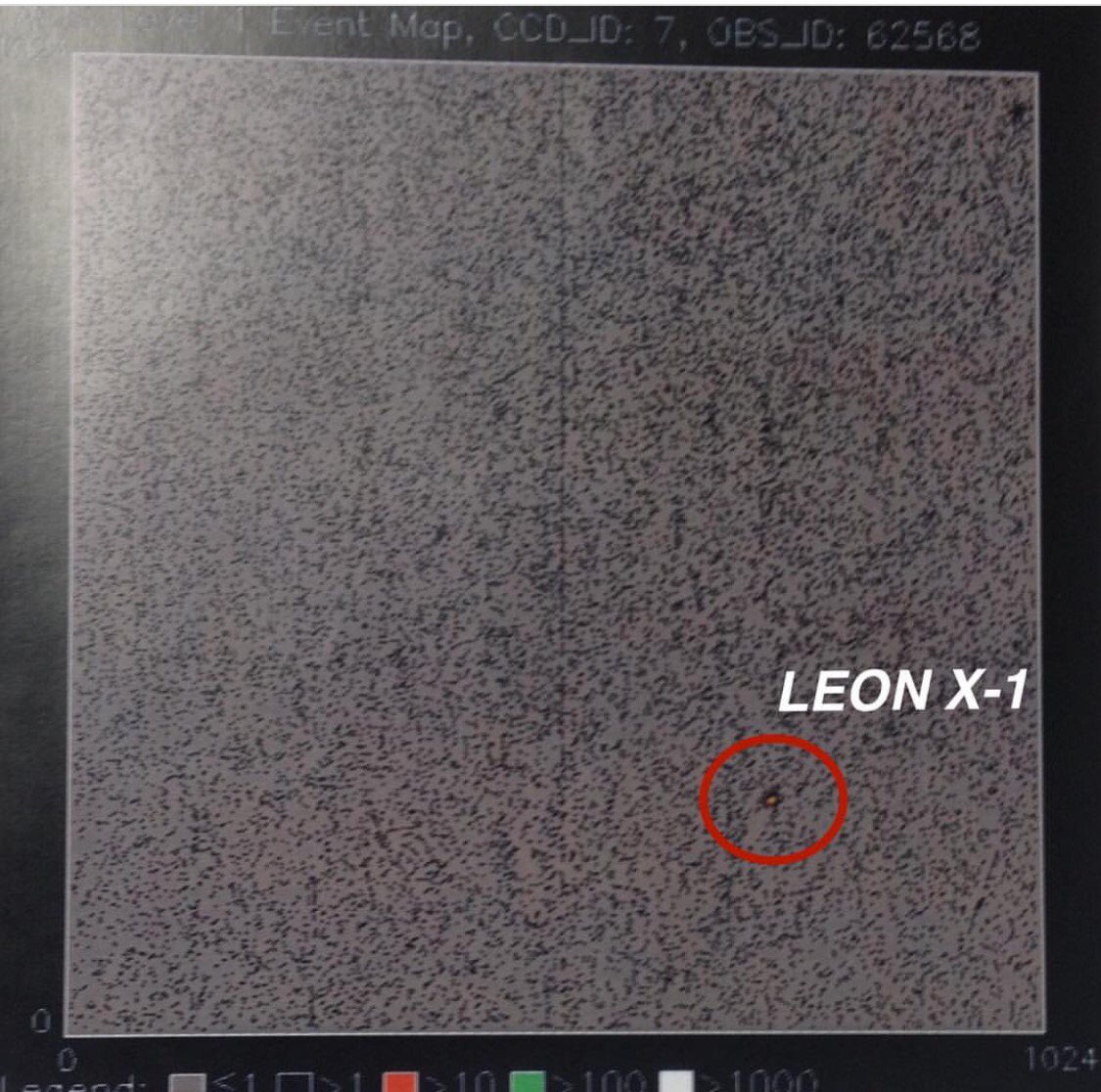 For 5+ years, I was part of the Science Operations Team responsible for monitoring the health and safety of the Observatory and its instruments, as well as scheduling the Observatory to maximize its science return. The primary instrument onboard the Chandra X-ray Observatory, responsible for carrying out more than two-thirds of all observations is the Advanced CCD Imaging Spectrometer (ACIS). I was part of the ACIS Operations team at the Harvard-Smithsonian Center for Astrophysics and worked closely with the instrument teams at MIT and PSU. Specifically, since the Observatory only makes contact with the ground once every ~8 hours via NASA's Deep Space Network, I wrote several software programs that monitored the health and safety of the ACIS during every real-time contact with the Observatory. I also wrote software that automated the review and checks of the mission command schedule that would be uploaded every week to be executed by the Observatory autonomously to carry out its science observation schedule. One of the key contributions I made to operating and maintaining the Observatory happened very early after launch. One month into the mission, we noticed that the instrument was suffering radiation damage. We quickly figured out that during perigee passage through the Earth's Van Allen belts, the mirrors on the Chandra X-ray Observatory were not only incredible at focussing X-ray photons from the Universe, they were also very good at focussing low energy protons from the Van Allen belts onto the instrument, causing "charge transfer inefficiency" (or CTI), which meant our spectral resolution was rapidly disappearing. Working with scientists at NASA's Marshall Space Flight Center, we quickly developed a brand new radiation model suitable for Chandra's elongated, elliptical orbit and used it to schedule science observations as well as when to shutdown for perigee passage through the Van Allen Belts. Not only did this new radiation model limit further degradation to the instrument, we also realized that we can more efficiently schedule the observatory such that we could regain up to 250,000 seconds of additional science time per year!
For 5+ years, I was part of the Science Operations Team responsible for monitoring the health and safety of the Observatory and its instruments, as well as scheduling the Observatory to maximize its science return. The primary instrument onboard the Chandra X-ray Observatory, responsible for carrying out more than two-thirds of all observations is the Advanced CCD Imaging Spectrometer (ACIS). I was part of the ACIS Operations team at the Harvard-Smithsonian Center for Astrophysics and worked closely with the instrument teams at MIT and PSU. Specifically, since the Observatory only makes contact with the ground once every ~8 hours via NASA's Deep Space Network, I wrote several software programs that monitored the health and safety of the ACIS during every real-time contact with the Observatory. I also wrote software that automated the review and checks of the mission command schedule that would be uploaded every week to be executed by the Observatory autonomously to carry out its science observation schedule. One of the key contributions I made to operating and maintaining the Observatory happened very early after launch. One month into the mission, we noticed that the instrument was suffering radiation damage. We quickly figured out that during perigee passage through the Earth's Van Allen belts, the mirrors on the Chandra X-ray Observatory were not only incredible at focussing X-ray photons from the Universe, they were also very good at focussing low energy protons from the Van Allen belts onto the instrument, causing "charge transfer inefficiency" (or CTI), which meant our spectral resolution was rapidly disappearing. Working with scientists at NASA's Marshall Space Flight Center, we quickly developed a brand new radiation model suitable for Chandra's elongated, elliptical orbit and used it to schedule science observations as well as when to shutdown for perigee passage through the Van Allen Belts. Not only did this new radiation model limit further degradation to the instrument, we also realized that we can more efficiently schedule the observatory such that we could regain up to 250,000 seconds of additional science time per year!
Working for a world-class research facility like the Chandra X-ray Observatory, I quickly learned that the images one typically sees in the press is literally the tip of the iceberg of what has to happen to make that observation possible. I also learned first-hand how incredibly smart, approachable, and dedicated the team of scientists and analysts responsible for the Observatory are in carrying out its mission. I was truly fortunate to have spent 5 years with such an outstanding team and my time at the CfA is definitely a highlight of my life!
Publications
Shanil has an extensive publication record. Scholarly publications include research related to astrophysical phenomena, science education, and spacecraft science operations.
Highlights include:
You can find a link to his complete bibliography online at ADS (sorted by citation counts).
Below are selected highlights in each area to provide sense of depth and breadth.
Science Education & Communication
Inspiring the Next Generation of Muslim Scientists and Engineers, Tejani, A. K., Bhatia, S., Virani, S. N., Meru, F., Astronomy Society of the Pacific 2020: Virtual Conference Embracing the Future: Astronomy Teaching and Public Engagement.
Improving Science Content Learning with Choreographed Songs at an Astronomy Summer Camp, Mangan, J. M, Newman, D., Doss, K., Virani, S. N., 2019, International Journal of Science Education, Part B, 9:2, 101-113, DOI: 10.1080/21548455.2019.1571257.
Using Social Media in Informal Science Education, Turner, R. & Virani, S. N., 2015, Southeastern Planetarium Association.
Evaluating the Effectiveness of a One-Week Space-Themed Day Camp for Middle School Students, Mangan, J. M., Virani, S. N., Kaznovsky, C., 2013, American Geophysical Union, Fall Meeting 2013.
Astrophysical Research
The Sudden Death of the Nearest Quasar, Schawinski, K., Evans, D. A., Virani, S. N., et al., 2010, The Astrophysical Journal Letters, Volume 724, Issue 1, pp. L30-L33.
Galaxy Zoo: The Fundamentally Different Co-Evolution of Supermassive Black Holes and Their Early- and Late-Type Host Galaxies, Schawinski, K., Urry, C. M., Virani, S. N., et al., 2010, The Astrophysical Journal, Volume 711, Issue 1, pp. 284-302.
The Space Density of Compton-Thick Active Galactic Nucleus and the X-Ray Background, Treister, E., Urry, C. M., Virani, S. N., 2009, The Astrophysical Journal, Volume 696, Issue 1, pp. 110-120.
Optical Spectroscopy of X-Ray Sources in the Extended Chandra Deep Field South, Treister, E., Virani, S. N., et al., 2009, The Astrophysical Journal, Volume 693, Issue 2, pp. 1713-1727.
Do Moderate-Luminosity Active Galactic Nuclei Suppress Star Formation?, Schawinski, K., Virani, S. N., et al., 2009, The Astrophysical Journal Letters, Volume 692, Issue 1, pp. L19-L23.
The Central Engines of Narrow-Line Seyfert 1 Galaxies, Ryan, C. J., De Robertis, M. M., Virani, S. N., Laor, A., Dawson, P. C., 2008, The Astrophysical Journal, Volume 654, Issue 2, pp. 799-813.
The hot stars in orbit around the M 31 central supermassive black hole: are they young or old?, Demarque, P., Virani, S. N., 2007, Astronomy and Astrophysics, Volume 461, Issue 2, pp.651-656.
The Extended Chandra Deep Field-South Survey: X-Ray Point-Source Catalog, Virani, S. N., Treister, E., Urry, C. M., Gawiser, E., 2006, The Astronomical Journal, Volume 131, Issue 5, pp. 2373-2382.
Chandra Measurement of the X-Ray Spectrum of a Quasar at z = 5.99, Schwartz, D. A., Virani, S. N., 2004, The Astrophysical Journal, Volume 615, Issue 1, pp. L21-L24.
A CCD Study of the Environment of Seyfert Galaxies. III. Host Galaxies and the Nearby Environments, Virani, S. N., De Robertis, M. M., VanDalfsen, M. L., 2000, The Astronomical Journal, Volume 120, Issue 4, pp. 1739-1749.
Spacecraft Science Operations
Improving the science observing efficiency of the Chandra X-ray Observatory via the Chandra radiation model, Virani, S. N., DePasquale, J. M., Schwartz, D. A., Cameron, R. A., Plucinsky, P. P., O'Dell, S. L., Minow, J. I., Blackwell, W. C., Jr., 2004, X-Ray and Gamma-Ray Instrumentation for Astronomy XIII. Edited by Flanagan, Kathryn A.; Siegmund, Oswald H. W. Proceedings of the SPIE, Volume 5165, pp. 530-541.
A study of the seasonal variations of the Chandra X-ray Observatory radiation model, DePasquale, J. M., Virani, S. N., Schwartz, D. A., Cameron, R. A., Plucinsky, P. P., O'Dell, S. L., Minow, J. I., Blackwell, W. C., Jr., 2004, X-Ray and Gamma-Ray Instrumentation for Astronomy XIII. Edited by Flanagan, Kathryn A.; Siegmund, Oswald H. W. Proceedings of the SPIE, Volume 5165, pp. 554-564.
A possible meteoroid impact on the Chandra X-Ray Observatory during the 2003 Leonids, Cameron, R. A., Brissenden, R. J.; Bucher, S., Gage, K., Martin, E., Shropshire, D., Virani, S. N., 2004, 35th COSPAR Scientific Assembly. Held 18 - 25 July 2004, in Paris, France., p.4490.
Managing radiation degradation of CCDs on the Chandra X-ray Observatory, O'Dell, S. L., Blackwell, W. C., Jr., Cameron, R. A., Minow, J. I., Morris, D. C., Spitzbart, B. J., Swartz, D. A., Virani, S. N., Wolk, S. J., 2003, X-Ray and Gamma-Ray Telescopes and Instruments for Astronomy. Edited by Joachim E. Truemper, Harvey D. Tananbaum. Proceedings of the SPIE, Volume 4851, pp. 77-88.
Monitoring the Health and Safety of the ACIS Instrument On-Board the Chandra X-ray Observatory, Virani, S. N., Ford, P. G., DePasquale, J. M., Plucinsky, P. P., 2002, Observatory Operations to Optimize Scientific Return III. Edited by Quinn, Peter J. Proceedings of the SPIE, Volume 4844, pp. 464-475.
Optimizing the efficiency of command load inspection for the Advanced CCD Imaging Spectrometer (ACIS) on the Chandra X-ray Telescope, DePasquale, J M., Virani, S. N., Plucinsky, P. P., 2002, Observatory Operations to Optimize Scientific Return III. Edited by Quinn, Peter J. Proceedings of the SPIE, Volume 4844, pp. 454-463.
The ACIS Particle Background: Modeling the Spatial, Spectral, and Temporal Components, Virani, S. N., Plucinsky, P. P., 2002, American Physical Society, April Meeting, Jointly Sponsored with the High Energy Astrophysics Division (HEAD) of the American Astronomical Society April 20 - 23, 2002.
Monitoring the Chandra X-Ray Observatory Radiation Environment: Correlations between GOES-8 and Chandra/EPHIN, During DOY 89-106, 2001, Virani, S. N., Cameron, R. A., Plucinsky, P. P., Mueller-Mellin, R., O'dell, S. L., 2002, Multi-Wavelength Observations of Coronal Structure and Dynamics -- Yohkoh 10th Anniversary Meeting. Proceedings of the conference held September 17-20, 2001, at King Kamehameha's Kona Beach Hotel in Kailua-Kona, Hawaii, USA. Edited by P.C.H. Martens and D. Cauffman. Published by Elsevier Science on behalf of COSPAR in the COSPAR Colloquia Series, 2002., p.411.
Chandra X-ray Observatory's radiation environment and the AP-8/AE-8 model, Virani, S. N., Mueller-Mellin, R., Plucinsky, P. P., Butt, Y. M., 2000, Proc. SPIE Vol. 4012, p. 669-680, X-Ray Optics, Instruments, and Missions III, Joachim E. Truemper; Bernd Aschenbach; Eds.
Modeling the Chandra Space Environment, Blackwell, W. C., Minow, J. I., O'Dell, S. L., Suggs, R. M., Swartz, D. A., Tennant, A. F., Virani, S. N., Warren, K. M., 2000, Proc. SPIE Vol. 4140, p. 111-122, X-Ray and Gamma-Ray Instrumentation for Astronomy XI, Kathryn A. Flanagan; Oswald H. Siegmund; Eds.
Our Island Universe
Our Island Universe is a short, weekly look at all things space -- how what goes on ``up there'' affects our life ``down here''. The central themes are to promote the public understanding of science, our exploration of the natural world, and how modern science is really a continuation of our species natural desire to understand the cosmos and our perspective within it. Topics cover how our Ancestors viewed the night sky to new discoveries in astrophysics. Astronomy is a shared cultural connection and by telling stories of our past and present, I hope to inspire the future.
All episodes are written and presented by Shanil Virani. Subscribe to the series via SoundCloud.
Subscribe to the series via SoundCloud.
